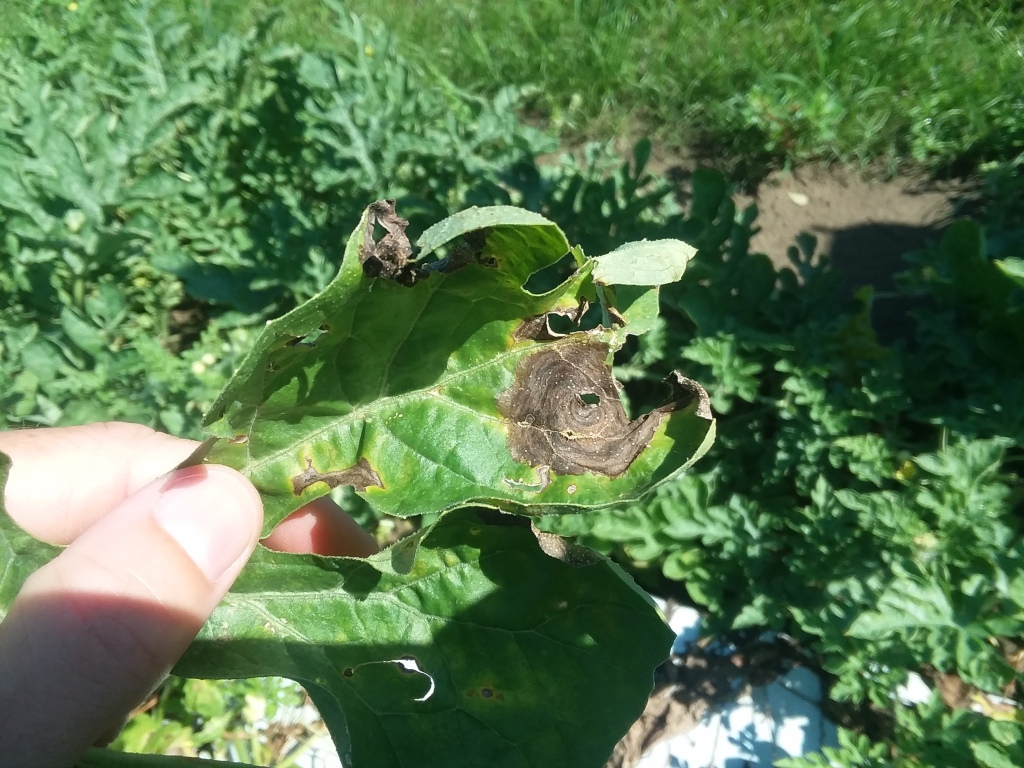From Clemson Plant Pathologist Tony Keinath.
Gummy stem blight is more common and more severe on fall cucurbit crops than crops grown in the spring. The cooler weather and longer dew periods in the fall provide an ideal environment for the fungal pathogen to grow and spread. Gummy stem blight is most common on watermelon and may also be seen on cantaloupe, cucumber, pumpkin, and winter squash foliage. Butternut squash fruit are susceptible to black rot, the fruit rot phase.

All growers—conventional and organic—should follow two proven steps to eradicate (eliminate) the gummy stem blight fungus from infested fields.
- Rotate away from all cucurbit crops for 2 years to allow time for the gummy stem blight fungus to die out in infested crop debris. The timeline starts when the first (diseased) crop is disked. It takes a full 24 months for 90% of the debris to decay under South Carolina weather conditions.
- Promptly disk cucurbit crop debris after harvest to stop the spread of airborne ascospores from fruiting bodies that form on vines, stems, crowns, petioles, tendrils, and leaves. Burying crop debris helps it decay faster.
Four fungicides provide good control of gummy stem blight on watermelon, the most susceptible cucurbit grown in the fall: Miravis Prime (FRAC Codes 7 + 12), Switch (FRAC Codes 9 + 12), Inspire Super (FRAC Codes 3 + 9), and Luna Experience (FRAC Codes 7 + 3). Note that because these fungicides share active ingredients in FRAC groups 3, 7, 9, and 12, the only products that can be rotated with each other are Miravis Prime and Inspire Super. Another option is to rotate a generic formulation of tebuconazole (FRAC Code 3) with Miravis Prime or Switch. None of these fungicides controls downy mildew or anthracnose. See Watermelon Fungicide Guide for 2021 for a sample spray program for fall watermelon that covers all major foliar diseases.